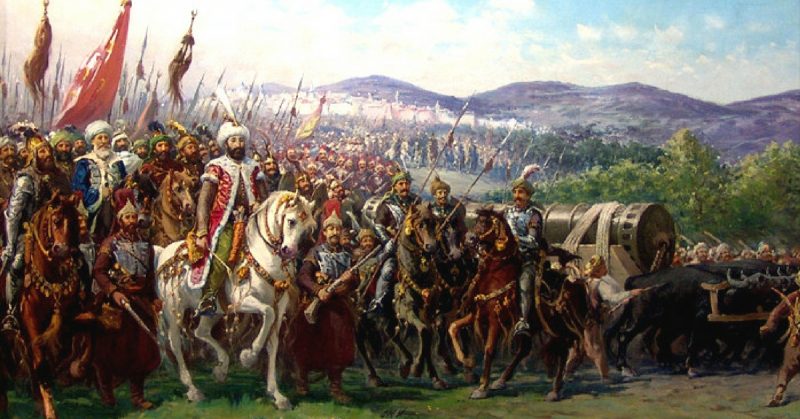The Roman Empire didn’t end with the 476 depositions of the Western Emperor Romulus or the Fall of Rome. It continued with solid momentum in the east with the powerful Byzantine Empire. Though we know it as the Byzantine Empire, to them it was unequivocally still Roman.
Even when Latin gave way to Greek, the Byzantines still considered themselves Roman. In the early medieval period, the Byzantines reclaimed control of many of the fallen territories, notably the Italian peninsula. They fought various emerging powers and faced several attempts to take their triple walled capital city. The only time it had been taken was through internal strife and treachery coinciding with the Fourth Crusade. The walls of the great city had never been breached by a foreign foe.
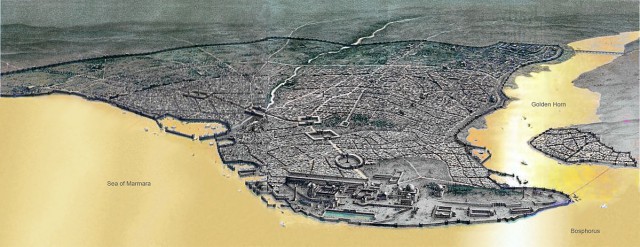
Though the Empire again held Constantinople after recovering it from the Fourth Crusade, it was far from the power it had been in the early medieval period. At the time of Michael VIII’s reclamation of Constantinople, the Byzantine territories were confined to Thrace and northern Greece and a part of Western Turkey. The Turks had taken territory in Asia Minor up to the territory of Nicomedia in the north and near to the island of Rhodes in the south.
A more sophisticated threat by this time, the Bulgarian Empire, and the Serbian Empires fought against the Byzantines as well. The city itself was greatly weakened by the Black Death and a large earthquake as well as civil wars that divided the populace. Under the Palaiologoi dynasty established after the reclamation of Constantinople, the empire became a shadow of its former self while a new eastern power set its sights on the great city.
The Ottoman Turks came to power with the downfall of the Seljuk Turks. Starting from a small state in Turkey, the Ottomans came to dominate the other states in the area and began to grow. By the 15th century, the Ottomans had claimed all of the Byzantine territories in Turkey with the exception of a narrow territory of the Empire of Trebizond, an allied successor state.
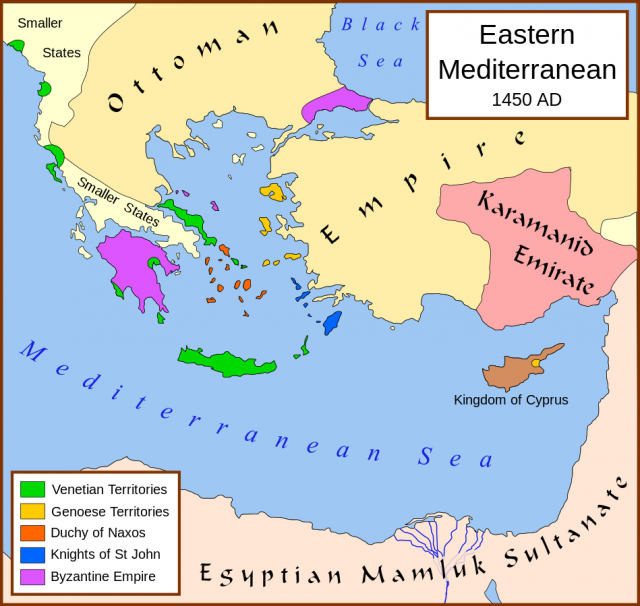
The Turks had also crossed the Bosporus and taken all of the Thracian territory west of Constantinople leaving control over a few square miles west of the city to the Byzantines. Even the great Byzantine city of Thessaloniki, which had once been considered as the new capital by Constantine, was taken by the Ottomans by 1430. The Byzantines had resorted to paying tribute to the Ottomans and at times acted as an extension of the Ottomans.
The Emperors of Constantinople recognized the Ottoman threat and often attempted to manipulate the affairs of the Ottomans by inciting rebellions and backing powerful claimants to the Ottoman throne. At times they were successful, but other times their meddling efforts failed, and they were attacked in response. In 1422, the Ottomans under Murad II set out to sack the city. The Byzantines were well prepared for the siege and had been adopting new cannons into their defenses.
The Ottomans brought their own cannons, but these were still early cannons that proved ineffective against the strong Theodosian walls. The Ottomans were eventually forced to withdraw as they found no way to gain access to the city and Byzantine leaders were able to successfully incite a rebellion within Ottoman territory.
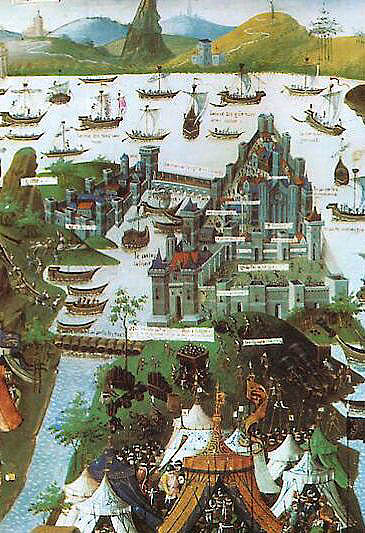
The Byzantine empire was in tatters, and the population continued to shrink, but the last remnants of the Romans stumbled on. In 1448, the last Roman/Byzantine Emperor, Constantine XI, ascended to the throne. He resolved to stand up to the Ottomans, and when a young and ambitious Mehmet II took the Ottoman throne in 1451, the two leaders would fight with everything they possessed.
Mehmet II had a grand strategic vision that was dependent on securing Constantinople for use as a new imperial capital. Mehmet was twenty-one when he ascended the throne and had spent his life learning how to rule. His approach for the capture of the city was similar to the previous Arab attempts; he secured and fortified areas around Constantinople to cut supplies to the city. The twin fortresses of Rumelihisari and Anadoluhisarı were completed on either side of the Bosporus just miles north of Constantinople.
Mehmet started his campaign by building his army up near Adrianople. He employed the services of a talented cannon designer known as Orban, who spent months designing and casting some of the largest cannons in the world at the time. Mehmet II spent the time waiting for the cannons by incessantly planning out ways to actually take the city. Mehmet II was truly prepared to take the city and arrived at the gates with an estimated 80-100,000 infantry, 90 ships and 70 cannons of varying calibers.
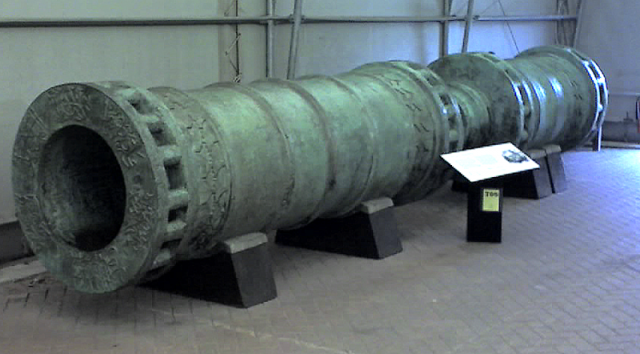
The Byzantines under Constantine and the previous emperor John VIII had the experience of the first siege and were well aware that an attack would come again. The city’s defenses were extensively repaired. Some foreign reinforcements had come, and the greatest of them were the Genoans led by Giovanni Giustiniani, who arrived just days before the siege with 700 men and several ships.
The total number of men defending the city numbered around 8-10,000 including a large combination of European allies who had finally realized that they would much rather have the Byzantines at their borders than the Turks. Constantine XI also ensured that the walls were in pristine condition and raised the chain across the golden horn. In the early days of April, Mehmet arranged his forces around the city and by the seventh of April 1453, the full-scale siege of the city began.
The defenders were outnumbered as much as ten to one and even the Sultan’s most elite troops, the Janissaries, numbered as much as the defenders on their own. In contrast to the previous Ottoman siege, it was now the Byzantines who had inferior cannons as Mehmet had been quite motivated to accrue a collection of the most cutting-edge gunpowder technology while the vast majority of the Byzantine cannons had been around since the first Ottoman siege.
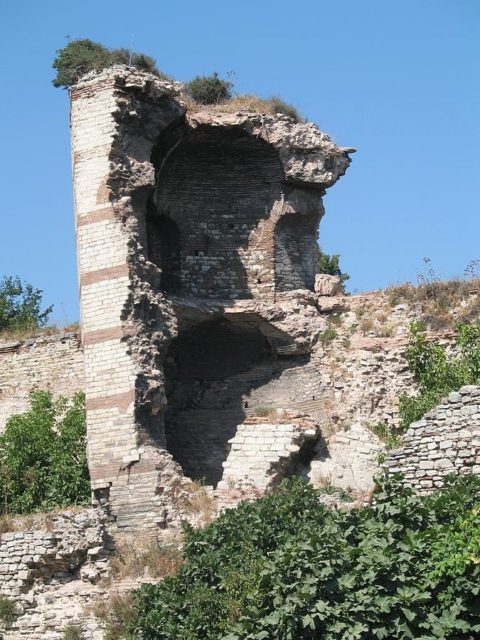
The Ottomans set up their cannons across from the very middle of the Theodosian walls located along the westernmost hill. A few days into the siege the cannons were able to destroy the tower of St. Romanos along the main wall. Constantine was shaken enough by this to seek peace with Mehmet in exchange for vast tribute payments to the Sultan. Mehmet offered to let Constantine leave the city and rule the Peloponnese of Greece while Mehmet would peacefully occupy the city. Constantine adamantly refused to leave the city, and the two sides resolved to fight to the end.
The Turkish navy attempted to fight their way into the Golden Horn. However, they were thwarted by the great chain, and the Byzantines were able to destroy a large portion of the Navy with cannon fire from the ships in the harbor and the sea walls along the Horn. The Turks were able to pay back the Byzantine navy however when Mehmet ordered his men to transport several of his ships overland from the Bosporus to the Golden Horn to bypass the chain.
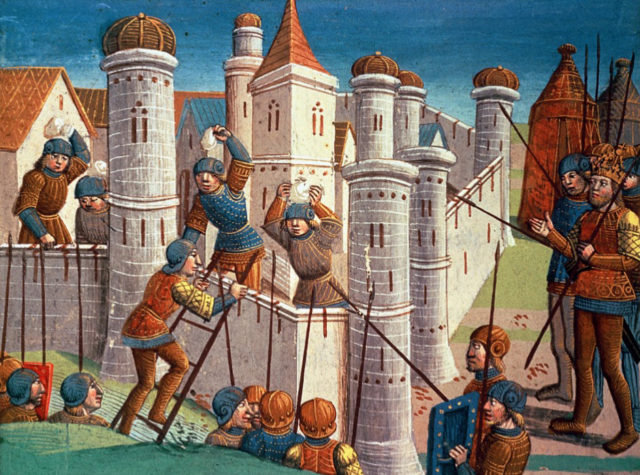
When fire ships were sent to counterattack these ships they were sunk by the Ottoman cannons that Mehmet had taken to repositioning almost daily. Mehmet focused much of the cannon power on the neighborhood of Blachernae and the Palace of the Porphyrogenitus, which was located at the juncture of the Theodosian and Blachernae walls. The Palace was the imperial residence of the last line of emperors, and Constantine XI remained there for the duration of the siege despite the palace being constantly bombarded and assaulted. The Turks launched several assaults at the juncture of the walls near the palace but were repulsed with heavy casualties each time.
Though the cannons of the Turks were superior at the time, the Byzantines still were able to cause significant casualties with their cannons. When a breach was opened in the walls and the Turkish infantry rushed through the defenders aimed into the masses and fired their cannons, which were packed with multiple shots each the size of a walnut.
This primitive shotgun devastated each wave of Turkish attacks and forced Mehmet to devise other methods of attack. Though several breaches were opened in the walls, they proved ineffective as the walls were quickly repaired with barrels of earth which actually absorbed the cannons better than the walls did. Even if the enemy attacked before repairs could be made the gap between the inner and outer wall forced any attackers to be flanked on three sides while still being subjected to missile fire from the main wall.
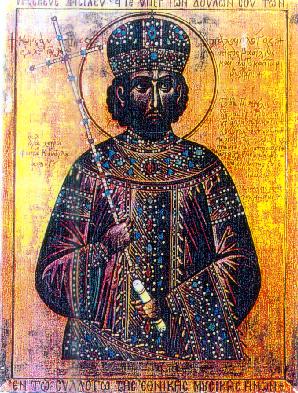
Several tunnels were attempted in the latter half of the siege, however, they were all discovered by the defenders and the Turkish miners often met disastrous fates. Mehmet finally planned an all-out attack after nearly two months of constant bombardment. On the 27th of May 1453, Mehmet arranged his forces to threaten every side of the city. His ships sported scaling ladders while the land force carried ladders of their own.
The exhausted defenders were forced to spread their force across more than twelve miles of walls. Mehmet did send his ships to attack the walls along with the land infantry, but the ships were easily repulsed. The land assault was where the Ottomans finally won the day, however. Tens of thousands of soldiers rushed the walls with scaling ladders.
Initially, the defenders were able to hold the Ottomans at bay under the superb leadership of the Venetian Giovanni Giustiniani, who had been placed in charge of the defense of the Theodosian walls since his arrival. During the assault, however, he was struck by a shot that pierced his arm and chest, and he was carried through the gates and back to the Venetian ships in the harbor. When the defenders saw their leader fall, their morale dropped and the last wave of Ottomans, the Janissaries, were able to overcome the defenders and scale the walls.
The city was looted for three days although fortunately did not endure the same level of death and destruction that was inflicted by the fourth crusade. Though it cost him dearly in both men and money, Mehmet was able to have his dream realized and after establishing Constantinople/Istanbul as the capital, the Ottoman Empire flourished for hundreds of years.
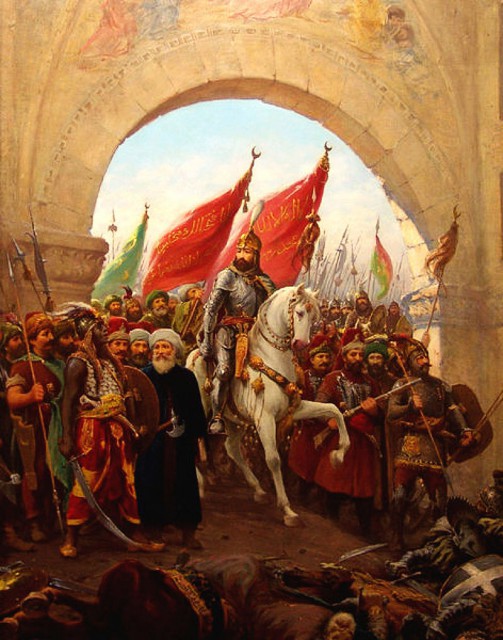
The defenses of Constantinople were among the most impressive in the world. Perhaps the most impressive feature of the defenses was the fact that the Theodosian walls did not fall until nearly 1,000 years after their initial construction and the invention of the cannon. They allowed the empire to survive despite consistently facing tremendous odds, even with the ultimate fall of the city, the defenders were able to inflict horrendous losses to the Ottoman attackers and it took a massive army armed with advanced weaponry over a month to take the city that had spent the last century in a state of decay.
The walls were an inspiration for early European kingdoms and when they finally fell they served as a lesson for all subsequent city defenses. The city had long protected Christian Europe from Muslim expansion and its fall ultimately left Europe vulnerable to attack from one of history’s greatest Muslim powers.
